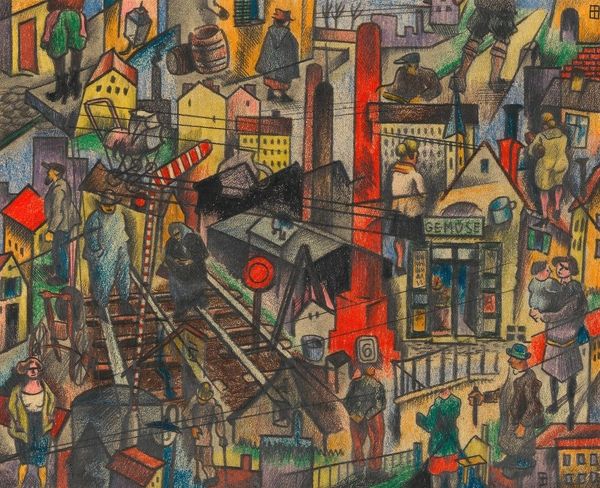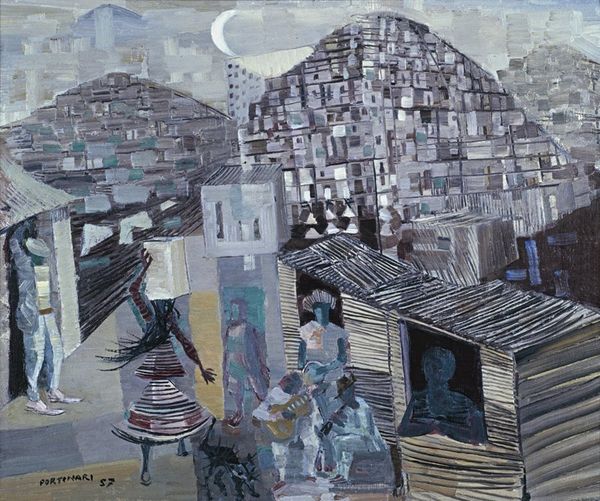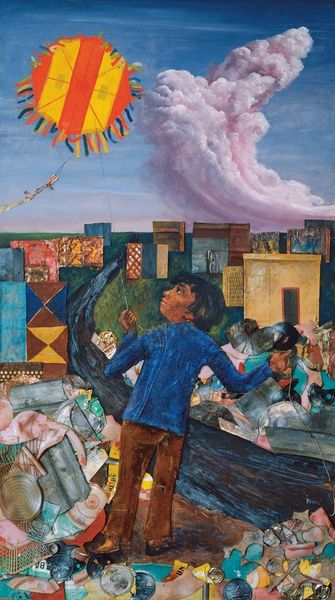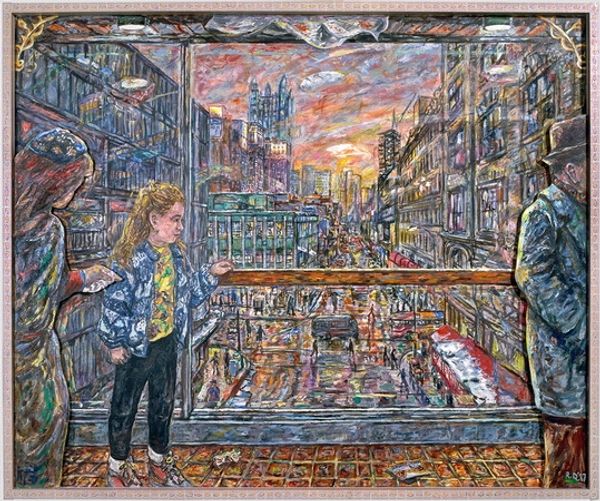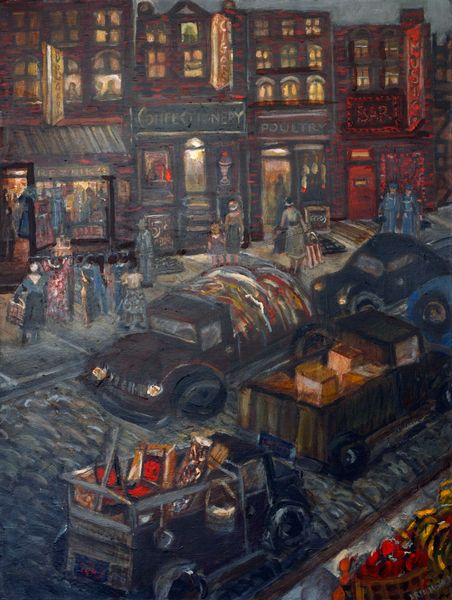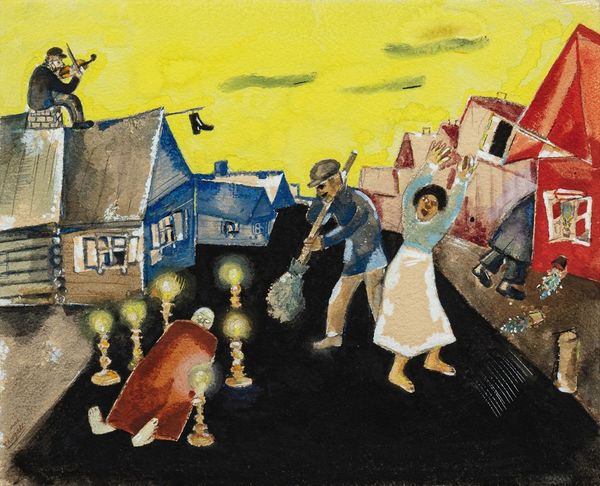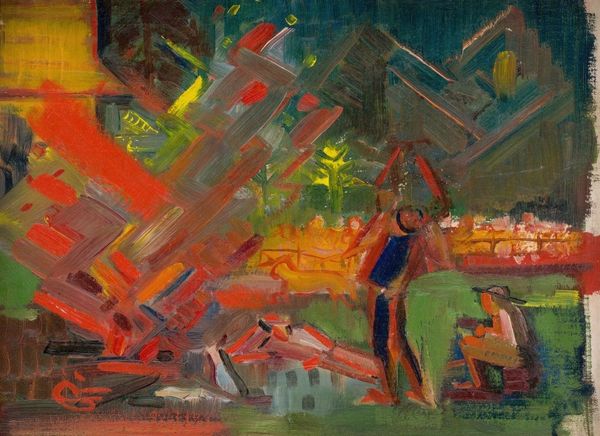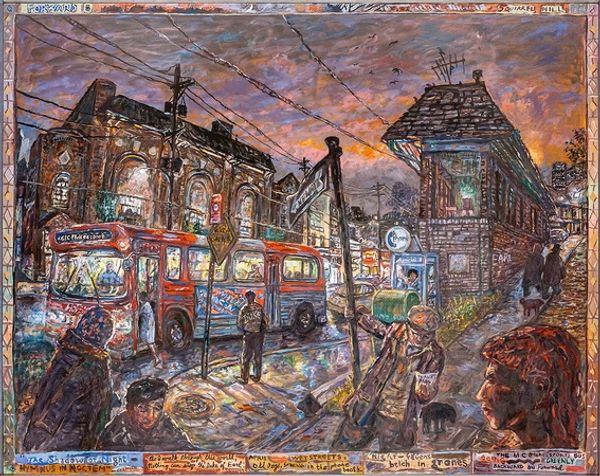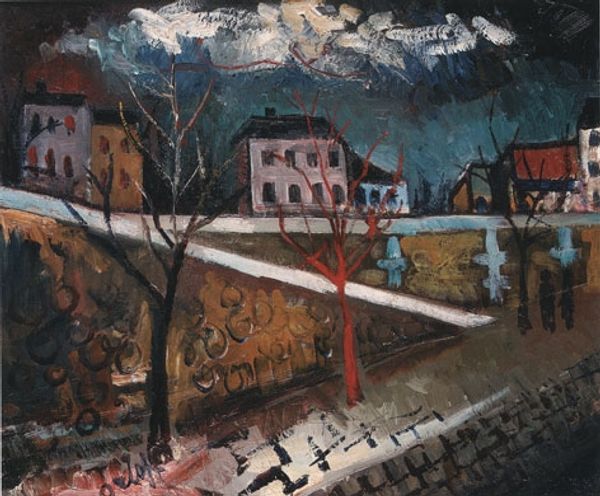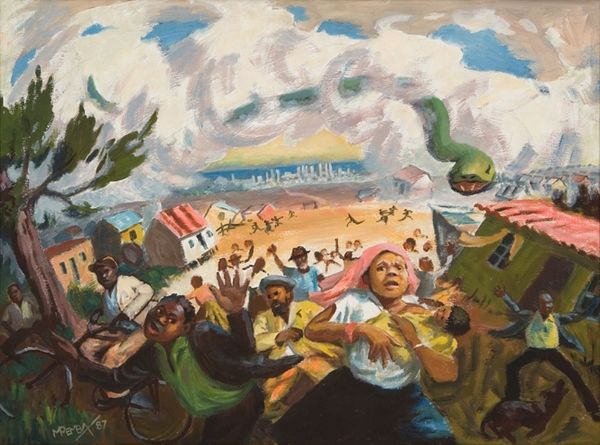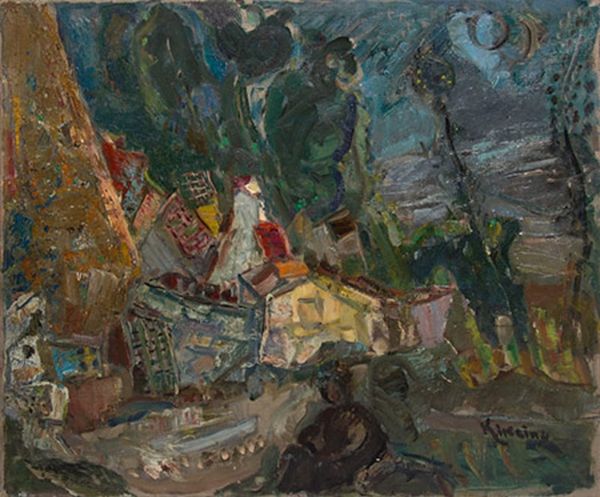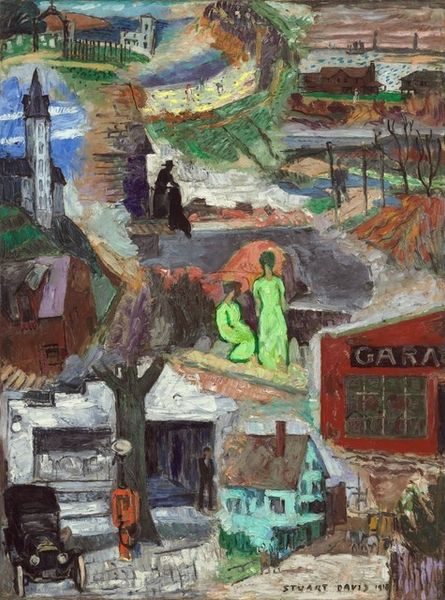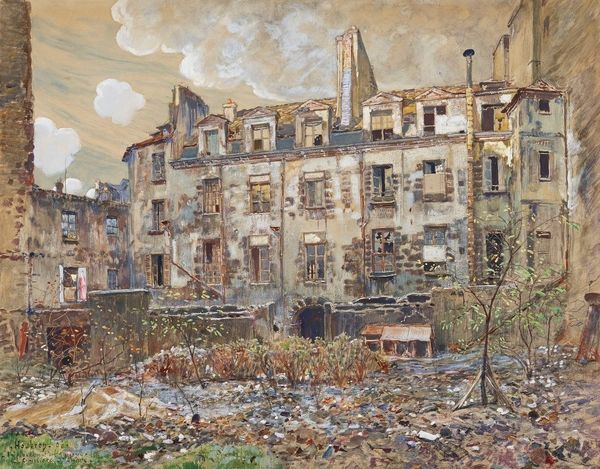
Copyright: David Burliuk,Fair Use
Editor: Here we have David Burliuk's "The Edge of City (Bronx)", painted in 1941 using oil on canvas. The scene teems with children playing amidst buildings, and what strikes me first is the heavy texture of the paint – you can practically feel the grit of the urban landscape. What stands out to you in this piece? Curator: What's compelling is how Burliuk translates the grittiness of urban life into a tactile experience. Notice how the thick impasto emphasizes the materiality of the painting itself, mimicking the density and build-up of the city. He is challenging the very definition of high art here. How do we elevate labor, industrial material and working-class neighborhoods? Editor: So you’re saying the painting isn’t just representing a scene, but embodying the conditions of that scene through the sheer physicality of the paint? Curator: Precisely. Think about the labor involved – the artist applying layer upon layer, mirroring the physical labor that constructed the Bronx itself. Consider how the industrial imagery challenges any romanticized vision of landscape painting, bringing the concerns of the working class into view. The materials and production are intrinsic to the social commentary. Where was this exhibited? Who was his audience? What was his economic standing? How do these things relate to the work? Editor: I see, so even the clothes drying on the line become important not just as visual details, but markers of daily labor and domestic life within this urban environment. Curator: Exactly! Burliuk's method refuses to separate art from life; instead, it pulls them into the same sphere. Editor: I had considered the visual aspects but hadn’t deeply considered his method and material choices as a reflection on labor and daily life. Curator: Analyzing art through a materialist lens brings forward labor, social context and means of production often invisible. It challenges us to rethink what we value in art, beyond just aesthetics.
Comments
No comments
Be the first to comment and join the conversation on the ultimate creative platform.
